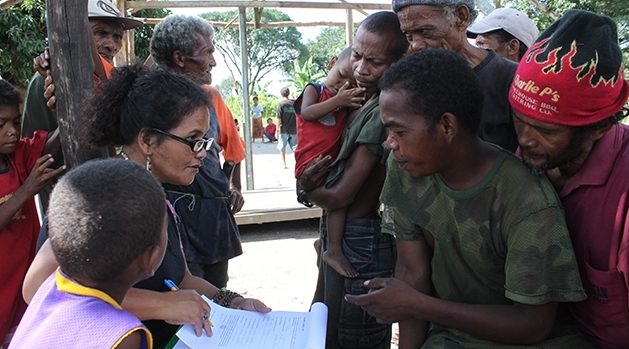Philippine ethnic group has most Denisovan DNA
The Philippine ethnic group Ayta Magbukon has the highest proportion of genes from our extinct relatives, the Denisovans, a new study led by Uppsala University shows. Their Denisovan share far exceeds that of ethnic groups in Papua New Guinea, who previously held the record. The study is published in the scientific journal Current Biology.
The Denisovans became known to science in 2010 with the sequencing of DNA from finger bones and teeth found in the Denisova Cave in Siberia. Despite good genetic information, who these people were remains a mystery, since only small bone fragments and teeth from them have been found. Scientists therefore use DNA technology in their quest to find out where the Denisovans lived, what they looked like and what happened to them. Today, thanks to these analyses, we know that they interbred both with our ancestors and with Neanderthals and, accordingly, that Denisovan genes, just like Neanderthal ones, are found in present-day humans. Among the inhabitants of parts of Oceania, in particular, the Denisovan genetic inheritance makes up a higher proportion of the genome than the genetic traces left by the Neanderthals do in modern humans.
The first inhabitants
The new study is part of a project aimed at finding out how the Philippines became populated. Previous interim results from the study have shown that Negritos, the ethnic group to which the Ayta Magbukon belong, were the first modern hominins to settle on the islands. The new findings indicate that the Negritos came into contact with the Denisovans already living there, and that there was interbreeding between the two groups. As a result, the Ayta Magbukon have a high level of Denisovan ancestry in their genome.
“Although, much later, Negritos admixed with the East Asian group that had a small proportion of Denisova DNA, we found that the Negritos had a proportion markedly higher than those of other ethnic groups. Compared with Australians and Papuans, the Negritos’ Denisovan ancestry was up to 46 per cent higher,” says Maximilian Larena of Uppsala University, the study’s first author.
The researchers collaborated with cultural institutions in the Philippines, several local universities and indigenous peoples’ organisations in the country. They analysed some 2.3 million genotypes from 118 ethnic groups in the Philippines, including various groups that self-identify as Negritos. Comprehensive genomes from AustraloPapuan and Ayta Magbukon Negritos were also included.
Combined with the discovery in 2019 of a small human relative called Homo luzonensis, the new results indicate that several archaic ethnic groups inhabited the Philippines before the arrival of Homo sapiens, and that the various groups may have been genetically related.
A clue to a mystery
The study also provides another clue to the mystery of the Denisovans, how they interacted with the modern humans and what happened to them subsequently.
In the scientists’ view, the combined findings reveal a complex, intertwined history of present-day and archaic hominins in Oceania, where distinct island populations of Denisovans interbred with modern humans in several different places and at various times.
Organismal Biology. Photo: David Naylor
“This admixture resulted in varied levels of Denisovan genes in the genomes of Filipino Negritos and other groups. On Southeast Asian islands, Negritos later admixed with people who arrived from East Asia and had some Denisovan genes, which caused dilution in the share of Denisovan DNA. But some groups, such as Ayta Magbukon, interbred only a little with the people who later migrated to the islands. That’s the reason why the Ayta Magbukon retained most of their Denisovan genes and therefore have the highest levels of those genes in the world,” Mattias Jakobsson says.
“When we sequence more genomes in the future, we’ll get a better insight into several different issues, including how the archaic inheritance has affected our biology and how it’s contributed to our adaptation as a species,” Maximilian Larena says.
Åsa Malmberg
Publication:
Larena et al. (2021), Philippine Ayta possess the highest level of Denisovan ancestry in the world, Current Biology. DOI: 10.1016/j.cub.2021.07.022

